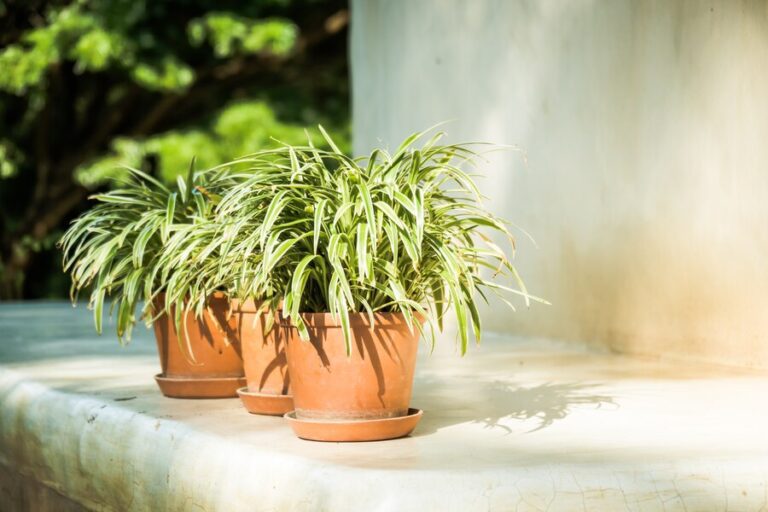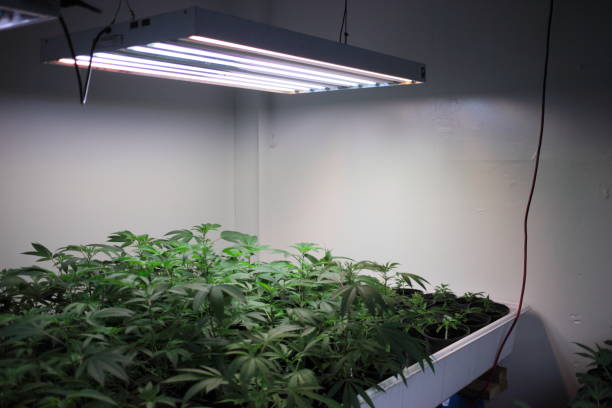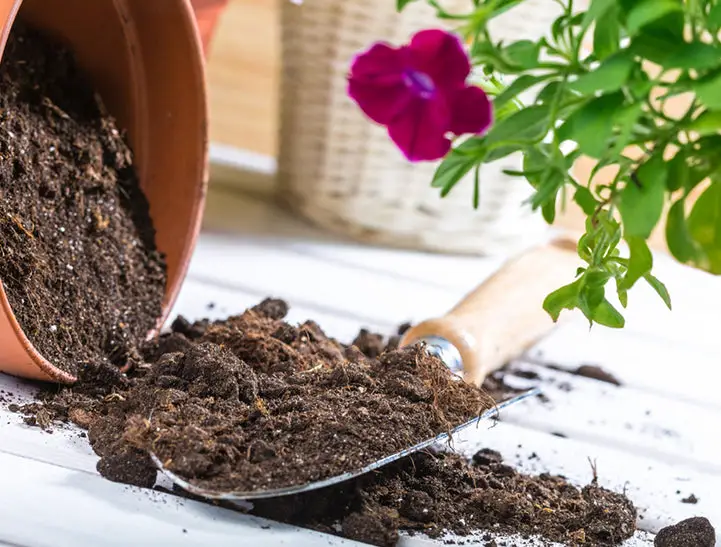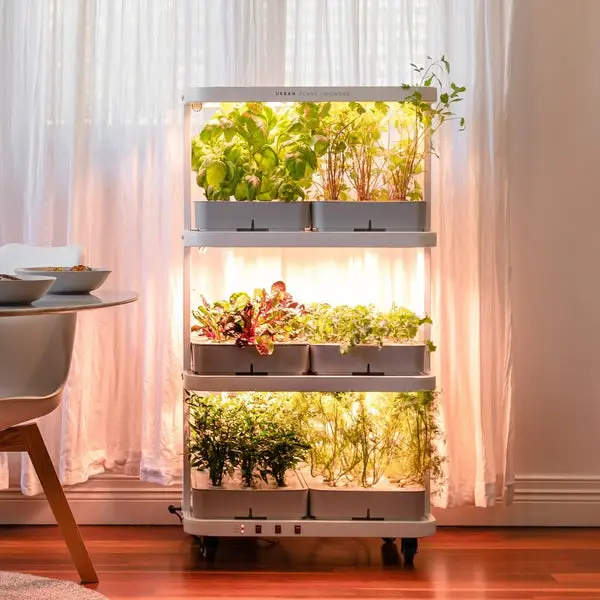CFL Grow Lights: A Guide for Indoor Gardening
Table of Contents
Understanding the Importance of Proper Lighting for Indoor Gardening
Proper lighting is of paramount importance in indoor gardening as it plays a crucial role in the growth and development of plants. Light is an essential factor that enables photosynthesis, the process by which plants convert light energy into chemical energy to fuel their growth. Without adequate light, plants may become weak, leggy, and susceptible to disease.
Choosing the right lighting for your indoor garden is crucial to ensure optimal plant growth and yield. The intensity, quality, and duration of light provided can significantly impact plant health and productivity. Different plants have varying light requirements, and understanding these requirements is essential to provide them with the necessary light for their growth stages. Moreover, a well-illuminated indoor garden can help prevent issues such as stretching, nutrient deficiencies, and poor flowering. By providing the correct lighting conditions, gardeners can enjoy the benefits of healthy, vibrant plants that thrive in their indoor gardening endeavors.
The Advantages of Using CFL Grow Lights for Indoor Gardening
CFL grow lights, or compact fluorescent lights, offer numerous advantages for indoor gardening enthusiasts. These types of lights have gained popularity due to their effectiveness and affordability. One significant advantage of using CFL grow lights is their energy efficiency. Compared to traditional incandescent bulbs, CFL lights consume less electricity while providing the same level of brightness. This not only helps reduce energy costs but also minimizes heat generation, preventing the risk of overheating for delicate indoor plants.
Another advantage of CFL grow lights is their versatility. These lights are available in various color temperatures, which can be tailored to meet the specific needs of different plants at different stages of growth. CFL lights emit a full spectrum of light that closely mimics natural sunlight, promoting healthy and vigorous plant growth. From seedlings to flowering plants, CFL grow lights can be adjusted to provide the optimum light intensity and spectrum required for each stage, ensuring that plants receive the light they need to thrive.
Overall, CFL grow lights offer a cost-effective and efficient solution for indoor gardening. With their energy efficiency and adaptability, these lights provide the necessary light spectrum for healthy plant growth. Whether you are a beginner or an experienced indoor gardener, incorporating CFL grow lights into your setup can significantly enhance the overall success and productivity of your indoor garden.
Exploring the Different Types of CFL Grow Lights Available
When it comes to indoor gardening, it is crucial to choose the right type of CFL grow lights for optimal plant growth. CFL stands for compact fluorescent lamp, and these lights are a popular choice among indoor gardeners due to their energy efficiency and affordability. There are several different types of CFL grow lights available, each offering unique features and benefits.
One of the most common types of CFL grow lights is the standard spiral bulb. These bulbs are compact in size and emit a balanced spectrum of light that is suitable for most types of indoor plants. They are also readily available and come in a range of wattages to accommodate various garden sizes.
Another popular option is the self-ballasted CFL grow light. These lights have a built-in ballast, which eliminates the need for an external ballast. This makes them convenient and easy to use, especially for beginners. Self-ballasted CFL grow lights are available in different color temperatures, allowing gardeners to tailor the light spectrum to the specific needs of their plants.
For more advanced indoor gardeners, there are also CFL grow lights with specialized spectrums. For example, there are bulbs with a higher amount of blue light, which promotes vegetative growth, and bulbs with a higher amount of red light, which stimulates flowering and fruiting. These specialized CFL grow lights can be used to manipulate the growth and development of plants in a controlled manner.
Overall, exploring the different types of CFL grow lights available is essential to find the right lighting solution for your indoor garden. Understanding the unique features and benefits of each type will help you make an informed decision based on your specific gardening needs and goals. So, take the time to research and experiment with different options to maximize the growth and health of your indoor plants.
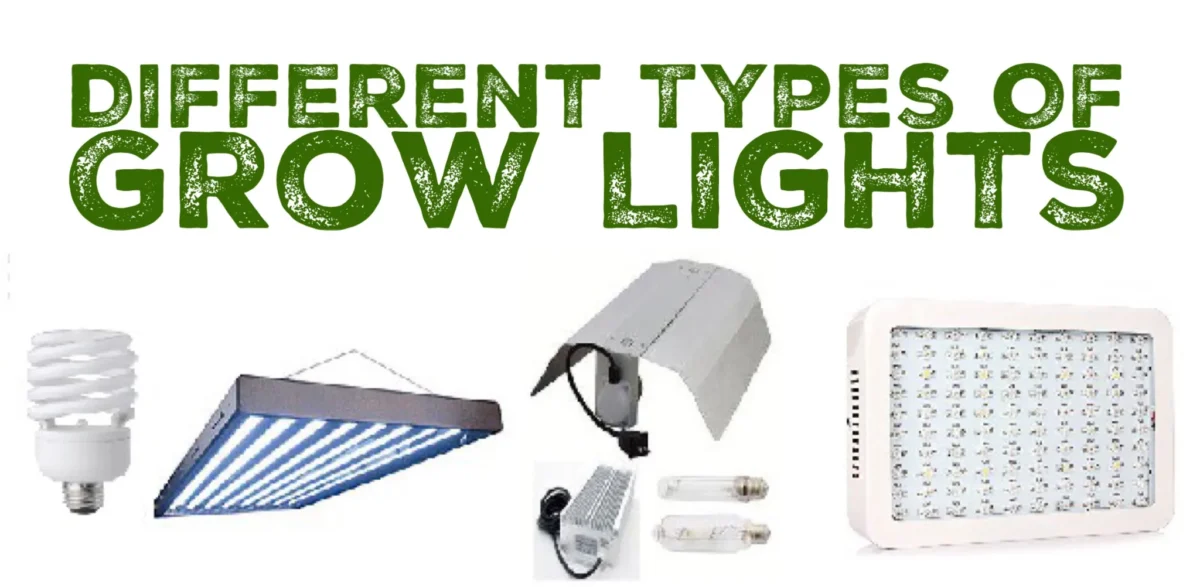
Factors to Consider When Choosing the Right CFL Grow Lights for Your Indoor Garden
When choosing the right CFL grow lights for your indoor garden, there are several important factors to consider. Firstly, it is crucial to determine the size of your indoor garden and the number of plants you plan to grow. This will help you determine the wattage and number of CFL bulbs needed to provide adequate light coverage for your plants. Additionally, consider the light spectrum emitted by the CFL grow lights. Different plants have different light requirements, so choose bulbs that offer a balanced spectrum of light to support optimal growth and development.
Another important factor to consider is the longevity and efficiency of the CFL grow lights. Look for bulbs with a long lifespan, as this will save you money in the long run. Additionally, choose energy-efficient bulbs to reduce electricity consumption and minimize your environmental footprint. It is also worth considering any additional features or technologies offered by the CFL grow lights, such as built-in reflectors or adjustable settings, which can enhance your gardening experience. By taking these factors into account, you can select the most suitable CFL grow lights for your indoor garden, ensuring healthy and thriving plants throughout the growing season.
Understanding the Different Light Spectrum of CFL Grow Lights and Their Effects on Plants
CFL grow lights emit a specific light spectrum that is crucial for the growth and development of plants in indoor gardens. These lights are designed to provide the appropriate wavelengths of light needed for photosynthesis, which is essential for plant growth. The light spectrum of CFL grow lights includes both warm and cool colors, with a range that typically spans from blue to red.
The blue spectrum, which is found in the cooler light range, promotes vegetative growth and is ideal for plants in their early stages. It stimulates the production of chlorophyll and helps with leaf and stem development. On the other hand, the red spectrum, which falls within the warmer light range, is essential for flowering and fruiting stages. It encourages the production of pigments necessary for flower and fruit development, as well as the ripening process.
The different light spectrum emitted by CFL grow lights can have a significant impact on plant growth and development. By understanding these effects, indoor gardeners can optimize their lighting setups to meet the specific needs of their plants at each stage. Adjusting the light spectrum accordingly can help plants thrive and achieve their maximum potential in terms of growth, yield, and overall health.
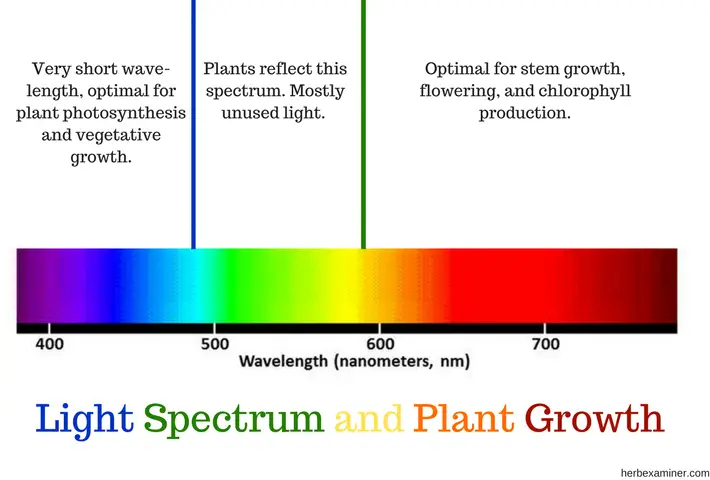
How to Calculate the Correct Wattage and Number of CFL Grow Lights for Your Indoor Garden
Calculating the correct wattage and number of CFL grow lights for your indoor garden is crucial to ensure optimal plant growth and development. When it comes to determining the wattage, it is essential to consider the size of your garden, the number of plants, and their specific light requirements.
To begin, you must understand the concept of lumens. Lumens measure the amount of light emitted by a light source, which is relevant when calculating the wattage needed for your indoor garden. Generally, plants require 20 to 40 watts of CFL grow light per square foot of growing space.
Next, consider the number of plants you have in your garden. Each plant requires a certain amount of light depending on its stage of growth, species, and light intensity preference. For example, seedlings and young plants usually require less light intensity compared to mature plants. It is crucial to research the specific light requirements of each plant and adjust the number of CFL grow lights accordingly.
By accurately calculating the correct wattage and number of CFL grow lights for your indoor garden, you can provide your plants with the necessary light intensity and spectrum for healthy and robust growth. This knowledge will help you create an optimal lighting environment that promotes plant development and ensures a bountiful harvest. Remember, investing time and effort in understanding the lighting needs of your plants will lead to successful indoor gardening.
The Role of Distance and Placement of CFL Grow Lights for Optimal Plant Growth
Proper distance and placement of CFL grow lights are crucial factors for achieving optimal plant growth in indoor gardening. Understanding how to position and space your lights correctly will ensure that your plants receive the right amount of light and energy for photosynthesis.
When it comes to distance, it’s important to strike a balance between providing sufficient light and preventing heat damage to your plants. As a general rule, most indoor plants benefit from having the grow lights positioned around 12 to 18 inches above the canopy. However, it’s important to consider the specific light intensity and heat output of the CFL bulbs you are using, as well as the specific needs of your plants. Some varieties may require higher or lower light levels, so it’s always best to refer to the specific guidelines for each plant or seek advice from a knowledgeable source.
The placement of CFL grow lights is equally important. The goal is to ensure that the light is evenly distributed across your plants, reaching all areas of the canopy. To achieve this, consider using a reflective surface or material around your plants, such as aluminum foil or reflective sheeting, to help bounce the light back onto the plants. Additionally, rotating your plants regularly can help ensure that all sides receive adequate light, as certain parts of the plants may have a tendency to shade others.
By paying close attention to the distance and placement of your CFL grow lights, you can create an optimal environment for your indoor garden. Remember to always consider the specific needs of your plants and consult trusted resources to maximize their growth potential.
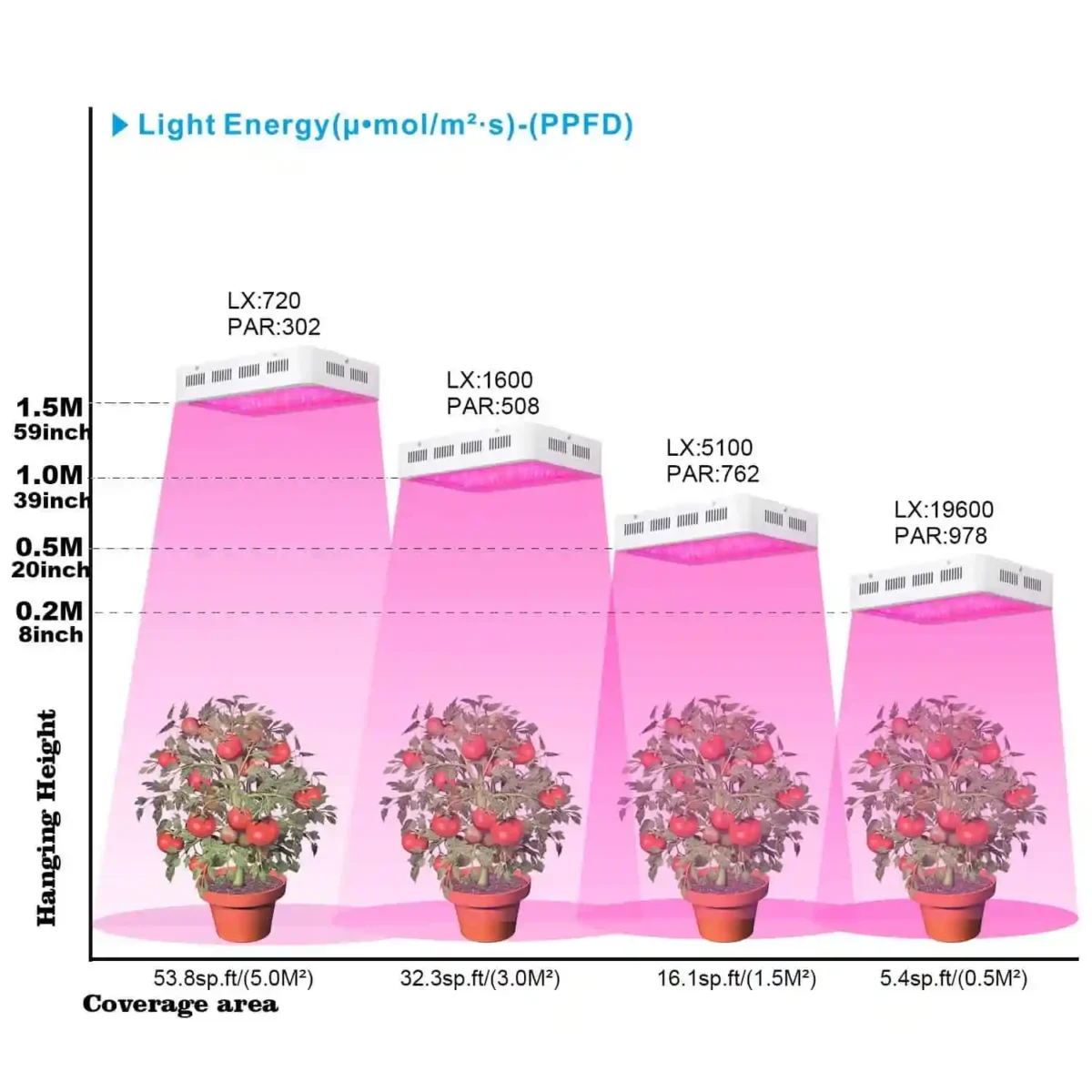
Tips for Installing and Setting Up CFL Grow Lights in Your Indoor Garden
Installing and setting up CFL grow lights in your indoor garden can greatly enhance plant growth and productivity. To ensure optimal results, there are a few key considerations to keep in mind.
Firstly, it’s important to determine the appropriate height and distance between the CFL grow lights and your plants. The distance will depend on the wattage of the bulbs, as well as the specific light requirements of your plants. As a general guideline, most plants thrive with CFL grow lights positioned 12-24 inches above the foliage. However, it’s recommended to refer to the specific lighting needs of each plant variety for the most accurate placement.
Secondly, it’s crucial to consider the lighting duration and consistency. CFL grow lights should typically be kept on for 12-16 hours a day to mimic natural daylight. Implementing a timer can help maintain a consistent lighting schedule, ensuring that your plants receive the necessary light exposure for healthy growth. Moreover, it’s essential to avoid sudden changes in lighting duration or intensity, as this can shock the plants and negatively impact their development.
By carefully adhering to these tips and guidelines, you can successfully install and set up CFL grow lights in your indoor garden, promoting optimal plant growth and ensuring a thriving and green oasis in your home.
Maintaining and Cleaning CFL Grow Lights for Longevity and Efficiency
Proper maintenance and regular cleaning are crucial for ensuring the longevity and efficiency of CFL grow lights in your indoor garden. By implementing a few simple practices, you can extend the lifespan of your lights and keep them performing optimally.
Firstly, it is important to regularly inspect your CFL grow lights for any signs of damage or wear. Check the cords, sockets, and fixtures for any frayed wires or loose connections. If any issues are detected, it is recommended to replace or repair the damaged parts as soon as possible to prevent any safety hazards.
Cleaning your CFL grow lights is also essential for maintaining their efficiency. Over time, dust, dirt, and other contaminants can accumulate on the surfaces of the bulbs, reducing their light output. To clean them, make sure the lights are turned off and cool to the touch. Gently wipe the bulbs with a soft, lint-free cloth or use a mild, non-abrasive cleaning solution. Avoid using harsh chemicals or abrasive materials, as they can damage the bulbs. Regular cleaning will help maximize the light output and extend the lifespan of your CFL grow lights.
Remember, keeping your CFL grow lights well-maintained and clean is an important aspect of indoor gardening. By following these practices, you can ensure their longevity and efficiency, allowing your plants to thrive and flourish.
Common Mistakes to Avoid When Using CFL Grow Lights for Indoor Gardening
Proper lighting is crucial for the success of indoor gardening, and using CFL grow lights can provide numerous benefits. However, there are common mistakes that many beginners make when using CFL grow lights that can hinder plant growth and overall results.
One common mistake to avoid is placing the CFL grow lights too far away from the plants. CFL lights have a limited light penetration range, so if they are placed too high or too far away, the plants may not receive sufficient light for proper photosynthesis. It is important to position the CFL grow lights at an optimal distance from the plants, usually around 6 to 12 inches, depending on the wattage of the bulbs. This ensures that the light reaches all parts of the plants and promotes healthy growth.
Another mistake to avoid is using the wrong wattage or number of CFL grow lights for your indoor garden. Each plant has specific light requirements, and using the wrong wattage or insufficient number of bulbs may result in inadequate lighting. It is crucial to determine the correct wattage based on the plant’s needs and the size of the growing area. Consulting a lighting guide or seeking advice from experienced gardeners can help you make the right decisions to optimize plant growth with CFL grow lights.
By avoiding these common mistakes and understanding the proper placement and wattage requirements of CFL grow lights, you can ensure a successful indoor gardening experience. Taking the time to research, plan, and implement the correct lighting setup will provide your plants with the necessary light for healthy growth and abundant harvests.
Supplementing CFL Grow Lights with Natural Sunlight or Other Artificial Lighting Sources
Supplementing CFL Grow Lights with Natural Sunlight or Other Artificial Lighting Sources
While CFL grow lights are an excellent option for indoor gardening, there may be times when supplementing them with natural sunlight or other artificial lighting sources becomes necessary. Natural sunlight is the ideal light source for plants, as it encompasses the full spectrum of light needed for their growth and development. If you have a garden near a window or have access to an outdoor area, placing your plants in direct sunlight for a few hours each day can greatly enhance their overall health and vigor.
However, if natural sunlight is not readily available or if your indoor garden is located in a space with limited access to sunlight, supplementing with other artificial lighting sources can be highly beneficial. LED grow lights, for instance, are a popular choice among indoor gardeners due to their energy efficiency and ability to provide specific light wavelengths that cater to plant growth. These lights are available in various spectrums, allowing you to tailor the lighting conditions to the specific needs of your plants.
When supplementing CFL grow lights with other artificial lighting sources, it’s essential to select lights that emit wavelengths suitable for plant photosynthesis. Additionally, it’s crucial to consider the intensity and duration of the light exposure, as different plant species have varying requirements. Striking a balance between CFL grow lights, natural sunlight, and other artificial lighting sources will help ensure optimal plant growth and yield in your indoor garden.
The Impact of CFL Grow Lights on Different Types of Indoor Plants
CFL grow lights have a significant impact on the growth and development of various types of indoor plants. These lights emit a balanced spectrum of light that closely resembles natural sunlight, making them suitable for a wide range of plant species.
One of the main advantages of CFL grow lights is their ability to promote healthy vegetative growth. They emit a high proportion of blue light, which is essential for stimulating leaf and stem development. This makes CFL grow lights particularly beneficial for leafy greens and herbs such as lettuce, spinach, and basil. These plants thrive under the influence of blue light, resulting in lush foliage and robust growth.
In addition to promoting vegetative growth, CFL grow lights also play a crucial role in flowering and fruiting phases. By providing a mix of red and blue light, these lights encourage proper flower formation and fruit development. This makes them ideal for flowering plants like roses, orchids, and tomatoes, as well as fruit-bearing plants like strawberries and peppers. The combination of red and blue light triggers specific physiological responses in these plants, leading to vibrant flowers and bountiful harvests.
When choosing CFL grow lights for different types of indoor plants, it is essential to consider their specific light requirements. Some plants, like succulents and cacti, thrive under bright, direct light and may require higher intensity CFL bulbs. On the other hand, shade-loving plants such as ferns and African violets may benefit from CFL bulbs with lower intensity or diffused light. Understanding the light needs of different plant species will help you select the most appropriate CFL grow lights for your indoor garden.
The impact of CFL grow lights on different types of indoor plants is not only limited to their growth and development but also extends to their overall health and longevity. Adequate light exposure provided by CFL grow lights ensures proper photosynthesis, leading to plants with strong roots, healthy foliage, and increased resistance to diseases and pests. By creating an optimal lighting environment, CFL grow lights contribute to the overall vitality and productivity of indoor plants.
In the next section, we will delve deeper into understanding the energy efficiency and eco-friendliness of CFL grow lights. By exploring these aspects, we can make informed choices that benefit not only our indoor plants but also the environment.
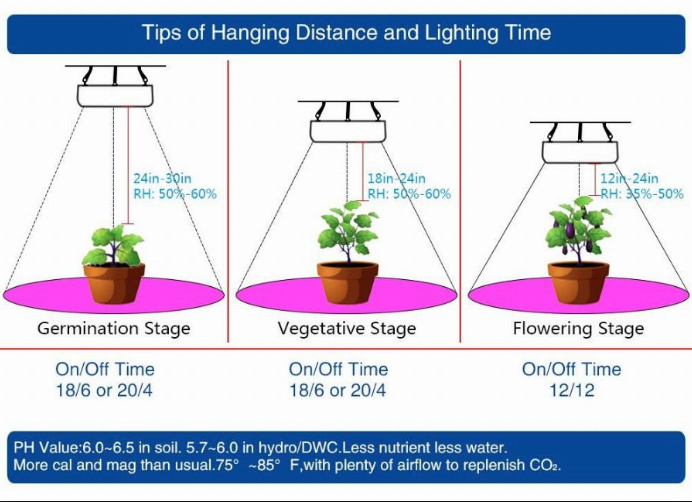
Understanding the Energy Efficiency and Eco-Friendliness of CFL Grow Lights
CFL (Compact Fluorescent Lamp) grow lights have gained popularity among indoor gardeners due to their energy efficiency and eco-friendliness. These lights are known to consume significantly less electricity compared to traditional incandescent bulbs, resulting in lower energy costs and reduced carbon footprint. According to the U.S. Department of Energy, CFLs use about 70% less energy than incandescent bulbs, translating into substantial energy savings over time.
Another aspect that makes CFL grow lights eco-friendly is their longer lifespan. Most CFL bulbs have an average lifespan of 10,000 to 15,000 hours, which means they need to be replaced less frequently than other lighting options. This not only reduces waste but also saves money in the long run. Additionally, CFLs do not emit as much heat as other types of grow lights, minimizing the need for additional cooling systems and further reducing energy consumption.
In terms of environmental impact, CFL grow lights also contribute to sustainability. Unlike some other types of lighting, CFLs do not contain mercury or toxic gases that can harm the environment. However, it is important to note that CFLs should be properly recycled or disposed of at designated collection sites to prevent any potential pollution. By choosing CFL grow lights, enthusiasts can create a greener and more sustainable indoor gardening environment while enjoying the benefits of efficient and effective plant growth.
Certainly! Let’s delve into the energy efficiency and eco-friendliness of CFL (Compact Fluorescent) grow lights compared to other lighting options:
| Aspect | CFL Grow Lights | LED Lights |
|---|---|---|
| Energy Efficiency | – CFLs use up to 75% less energy than traditional incandescent bulbs. | – LEDs are even more efficient than CFLs. |
| – They produce the same amount of light as incandescent bulbs but consume significantly less energy. | – LEDs direct light more effectively at plants. | |
| – CFLs last up to 10 times longer than incandescent bulbs, reducing production and disposal costs. | – LEDs have an average lifespan of about 25,000 hours. | |
| Heat Generation | – CFLs produce less heat compared to incandescent bulbs. | – LEDs operate at cooler temperatures. |
| Cost | – CFLs are generally more affordable than LEDs upfront. | – LEDs have a higher initial cost but pay off in the long run. |
Troubleshooting Common Issues with CFL Grow Lights in Indoor Gardens
Common Issues with CFL Grow Lights in Indoor Gardens can sometimes arise, but with proper troubleshooting techniques, these problems can be resolved efficiently. One common problem is the lack of sufficient light reaching the entire plant canopy. This can result in uneven growth, with the top of the plant receiving more light than the lower portions. To address this issue, it is important to ensure that CFL grow lights are positioned at an appropriate distance from the plants. Adjusting the height of the lights can help distribute the light evenly across the entire canopy, promoting balanced growth.
Another common issue is the occurrence of burnt or scorched leaves. This can happen when the plants are placed too close to the CFL grow lights, causing excessive heat and light intensity. To prevent this problem, it is important to maintain the recommended distance between the plants and the lights. Additionally, using reflectors or light diffusers can help to spread the light more evenly and reduce the concentration of heat in specific areas. Regularly monitoring the temperature and adjusting the lights accordingly can also prevent leaf burning and ensure optimal plant health.
Comparing CFL Grow Lights with Other Types of Indoor Lighting Options
CFL (Compact Fluorescent Light) grow lights have gained popularity among indoor gardeners due to their energy efficiency and affordability. However, it is essential to compare CFL grow lights with other types of indoor lighting options to determine which is best suited for your specific gardening needs.
One notable alternative to CFL grow lights is LED (Light Emitting Diode) grow lights. LED lights are highly energy-efficient, emitting very little heat while providing sufficient light for plant growth. They also have a longer lifespan compared to CFL lights, making them a cost-effective option in the long run. LED lights can be tailored to emit specific light spectrums essential for different stages of plant development, maximizing growth and yield.
Another indoor lighting option is HID (High Intensity Discharge) grow lights, which include metal halide (MH) and high-pressure sodium (HPS) lights. HID lights are known for their intense brightness, making them suitable for large-scale indoor gardens. However, they generate a significant amount of heat, requiring proper ventilation and cooling systems to maintain optimal temperatures for plant growth. HID lights are commonly used in commercial settings but may not be the best choice for small-scale or home-based indoor gardens.
Certainly! Let’s compare CFL (Compact Fluorescent) grow lights with other types of indoor lighting options. Each type has its advantages and disadvantages, so you can make an informed decision for your indoor garden:
| Light Type | Advantages | Disadvantages |
|---|---|---|
| CFL (Fluorescent) Bulbs | – Cheap and widely available. – Suitable for growing indoor plants for decades. – Recognizable spiral CFLs. – T5 tubes are popular for plants. | – Less efficient compared to other options. – Light is diffused. |
| LED (Light Emitting Diodes) | – More efficient. – Directs light at the plant. – Cooler operation. | – Expensive upfront cost. – Best for budget-friendly LED lights. |
Remember, both CFL bulbs and LEDs have their place in indoor gardening, so choose based on your specific needs and preferences.
Tips for Optimizing the
When it comes to optimizing the performance of your indoor garden, there are several key factors to consider. One of the most important aspects is ensuring that your plants receive the right amount of light. Adequate lighting is crucial for photosynthesis, the process by which plants convert light energy into chemical energy to fuel their growth. To optimize the lighting in your indoor garden, it is important to consider the intensity, duration, and spectrum of light that your plants require.
Firstly, it is essential to understand the specific light requirements of the plants in your indoor garden. Different plants have different needs when it comes to light intensity and duration. Some plants thrive in bright, direct sunlight, while others prefer more shade. Research the light requirements of the specific plants you are growing and adjust your lighting setup accordingly. Additionally, monitor the duration of light exposure that plants need, as some plants require longer periods of light than others.
Next, consider the spectrum of light that your plants need for optimal growth. Light is made up of different colors, each with a different wavelength. Plants primarily absorb red and blue light for photosynthesis, so it is important to provide them with a light source that emits these wavelengths. Certain types of CFL grow lights are designed to provide a balanced spectrum of light that closely mimics natural sunlight, making them an excellent choice for indoor gardening.
By taking these key factors into consideration and ensuring that your plants receive the right amount of light, you can optimize the growth and health of your indoor garden. Providing the correct lighting conditions is a crucial step towards cultivating thriving plants and achieving a successful garden. So, take the time to research the light requirements of your plants, invest in high-quality CFL grow lights, and monitor the intensity, duration, and spectrum of light to give your indoor garden the best chance for success.
For more information watch the below video.
What are the benefits of using CFL grow lights for indoor gardening?
CFL grow lights provide a cost-effective and energy-efficient lighting solution for indoor gardening. They produce a balanced light spectrum that promotes healthy plant growth and can be used for various stages of plant development.
How do I choose the right CFL grow lights for my indoor garden?
When selecting CFL grow lights, consider factors such as the light spectrum, wattage, and number of lights. Different plants have different light requirements, so choose bulbs that match the specific needs of your plants.
Can I supplement CFL grow lights with natural sunlight?
Yes, it is possible to supplement CFL grow lights with natural sunlight. If your indoor garden has access to natural light, you can position your plants near windows or skylights to maximize their exposure to sunlight.
How do I calculate the correct wattage and number of CFL grow lights for my indoor garden?
To calculate the wattage and number of CFL grow lights needed, consider the size of your indoor garden and the light requirements of your plants. As a general guideline, provide around 30-50 watts per square foot of growing space.
How should I install and set up CFL grow lights in my indoor garden?
Install CFL grow lights at an appropriate height above your plants, ensuring sufficient coverage. Use adjustable fixtures or hang the lights using chains or ropes. Position the lights in a way that allows for even light distribution across all plants.
How do I maintain and clean CFL grow lights for longevity and efficiency?
Regularly clean the surface of CFL grow lights with a soft cloth or sponge dampened with water or mild soap solution. Avoid using abrasive cleaners or excessive moisture. Replace bulbs when they reach the end of their lifespan to maintain optimal performance.
What are some common mistakes to avoid when using CFL grow lights for indoor gardening?
Avoid placing CFL grow lights too far or too close to your plants, as it can lead to insufficient or excessive light exposure. Also, make sure to regularly monitor and adjust the light schedule to match the specific needs of your plants.
How do CFL grow lights compare to other types of indoor lighting options?
CFL grow lights are more energy-efficient compared to traditional incandescent lights and produce less heat, reducing the risk of plant damage. However, they may have a lower light intensity compared to other options like LED grow lights.
Can CFL grow lights be used for all types of indoor plants?
CFL grow lights can be used for a wide range of indoor plants, including herbs, vegetables, and flowering plants. However, some high-light plants may require additional lighting or a combination of different light sources for optimal growth.
Are CFL grow lights eco-friendly and energy-efficient?
Yes, CFL grow lights are known for their energy efficiency. They consume significantly less electricity compared to traditional lighting options, contributing to lower energy consumption and reduced environmental impact.

Nicole Burke is a dynamic writer at SouthElMonteHydroponics, fueled by her passion for horticulture and environmental sustainability. Armed with a degree in Environmental Science from a renowned institution, Nicole’s expertise lies in hydroponic gardening, organic farming, and biodiversity conservation. Her insatiable curiosity and love for nature drive her to explore innovative techniques in hydroponics, seeking to revolutionize the way we grow crops in urban environments. Nicole’s writing reflects her deep commitment to promoting eco-conscious practices and fostering a deeper connection between humans and the natural world. Through her engaging storytelling, she inspires others to embrace sustainable living and harness the power of hydroponics for a greener future.

